Abstract
The latitudinal diversity gradient (LDG) is recognized as one of the most pervasive, global patterns of present-day biodiversity. However, the controlling mechanisms have proved difficult to identify because many potential drivers covary in space. The geological record presents a unique opportunity for understanding the mechanisms which drive the LDG by providing a direct window to deep-time biogeographic dynamics. Here we used a comprehensive database containing 52,318 occurrences of marine fossils to show that the shape of the LDG changed greatly during the Permian–Triassic mass extinction from showing a significant tropical peak to a flattened LDG. The flat LDG lasted for the entire Early Triassic (∼5 My) before reverting to a modern-like shape in the Middle Triassic. The environmental extremes that prevailed globally, especially the dramatic warming, likely induced selective extinction in low latitudes and accumulation of diversity in high latitudes through origination and poleward migration, which combined together account for the flat LDG of the Early Triassic.
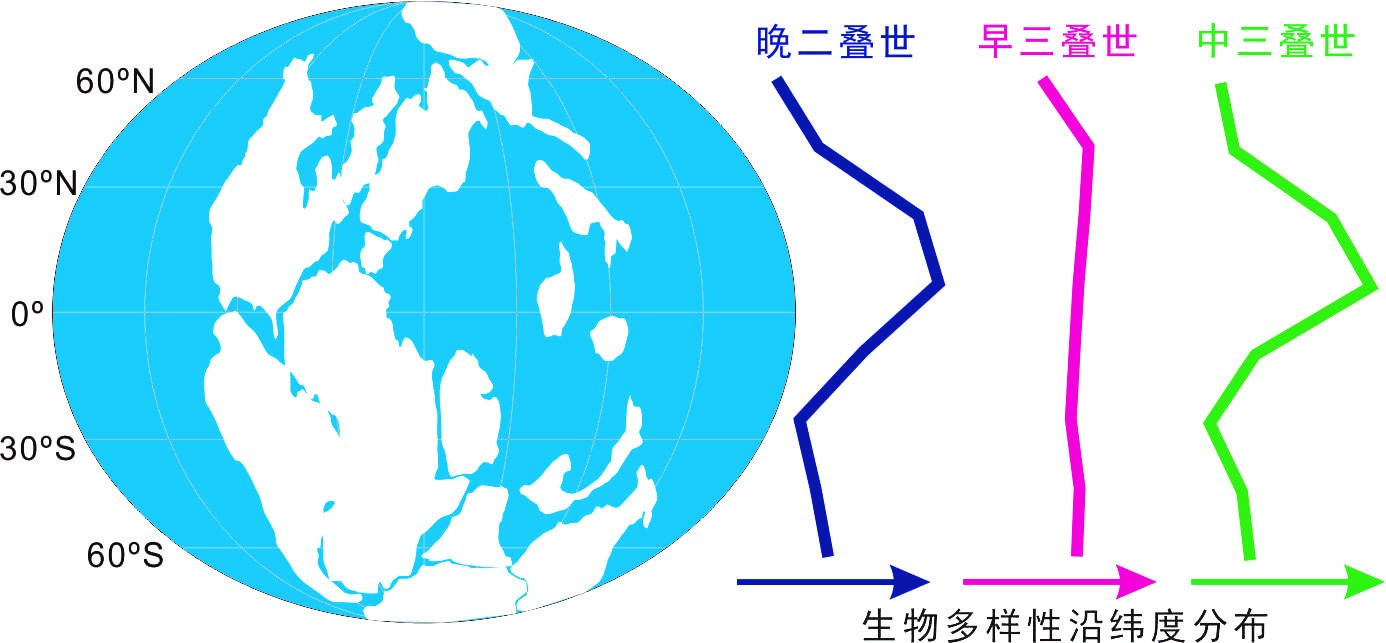
Variation of latitudinal gradient curve of diversity from Late Permian to Middle Triassic
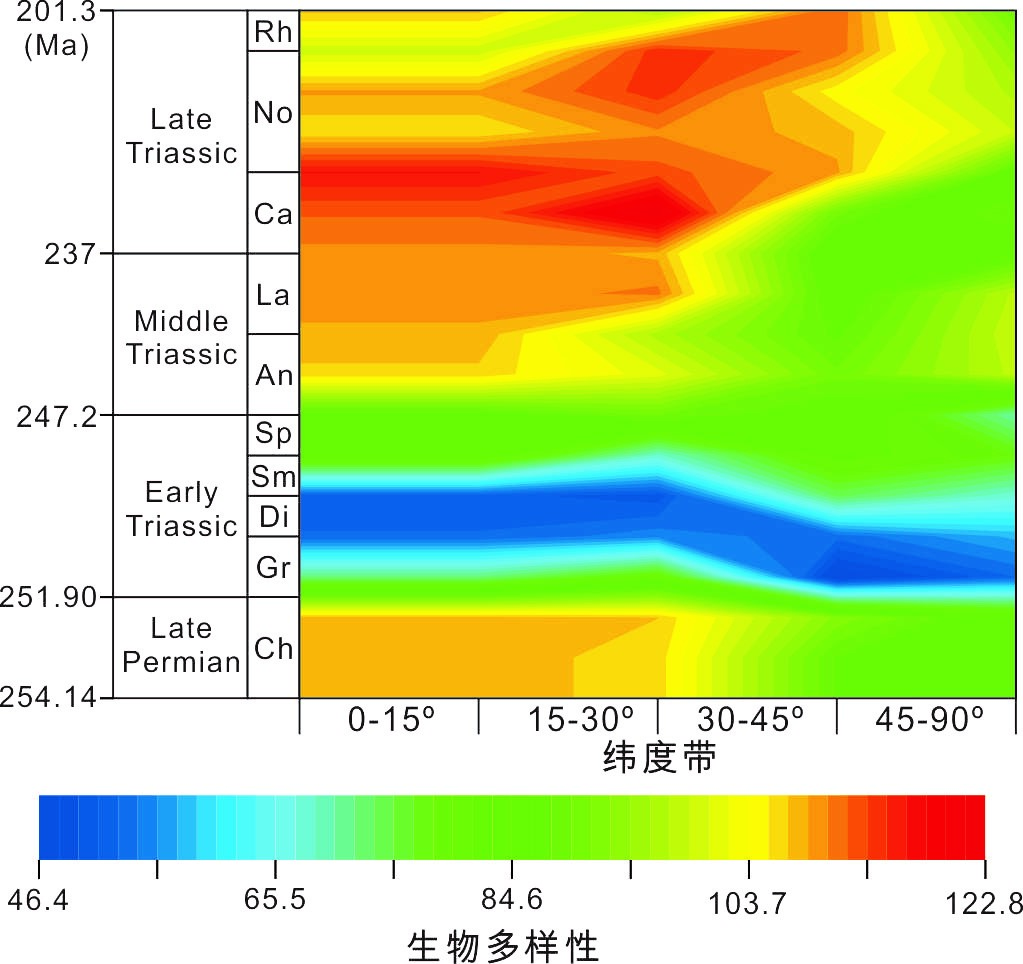
Rarefied genus-level diversity trends related to latitude from the late Permian to the end of the Triassic. Data are standardized by repeatedly subsampling from a randomly generated set until reaching a quota of 136 occurrences in each time bin at each latitudinal interval (SI Appendix, Table S3). Diversities are drawn as a contour map by using Origin Pro-2017 software. Ch, Changhsingian; Gr, Griesbachian; Di, Dienerian; Sm, Smithian; Sp, Spathian; An, Anisian; La, Ladinian; Ca, Carnian; No, Norian; Rh, Rhaetian.
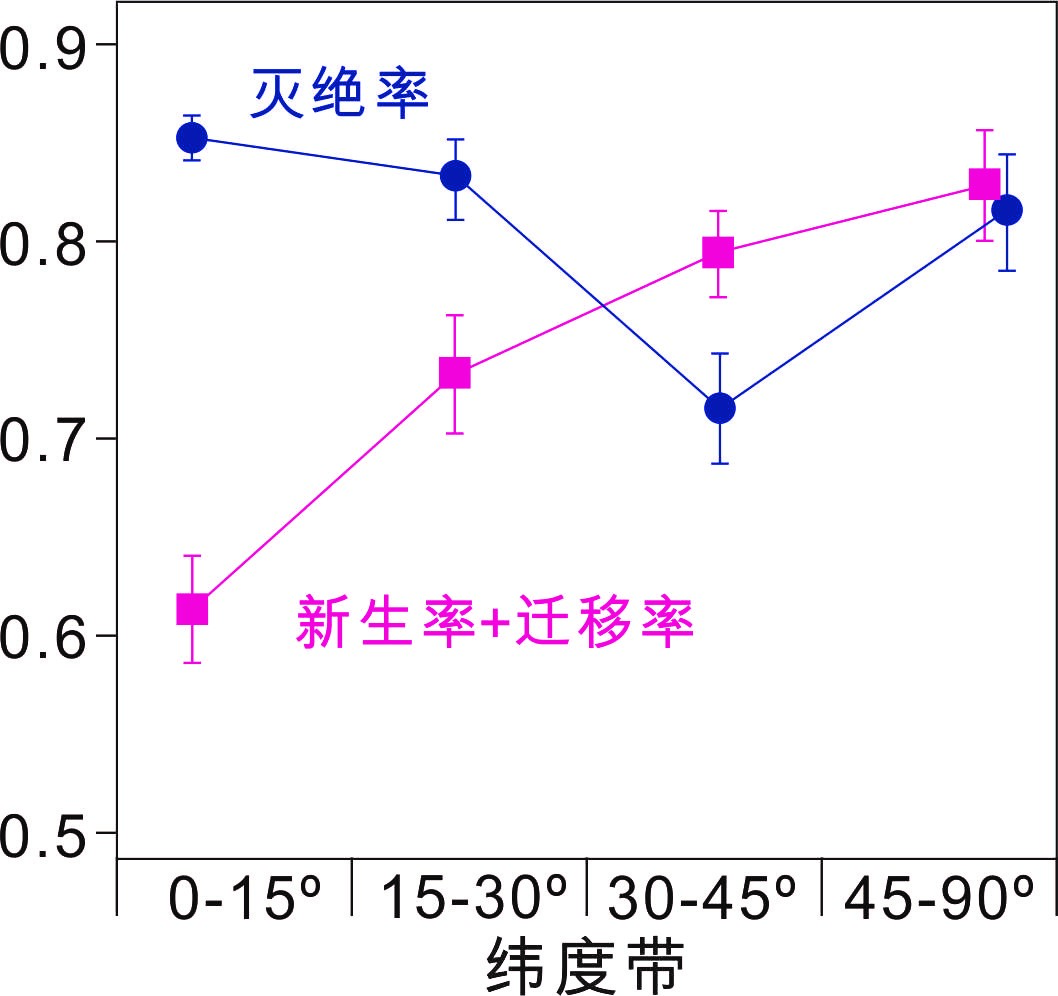
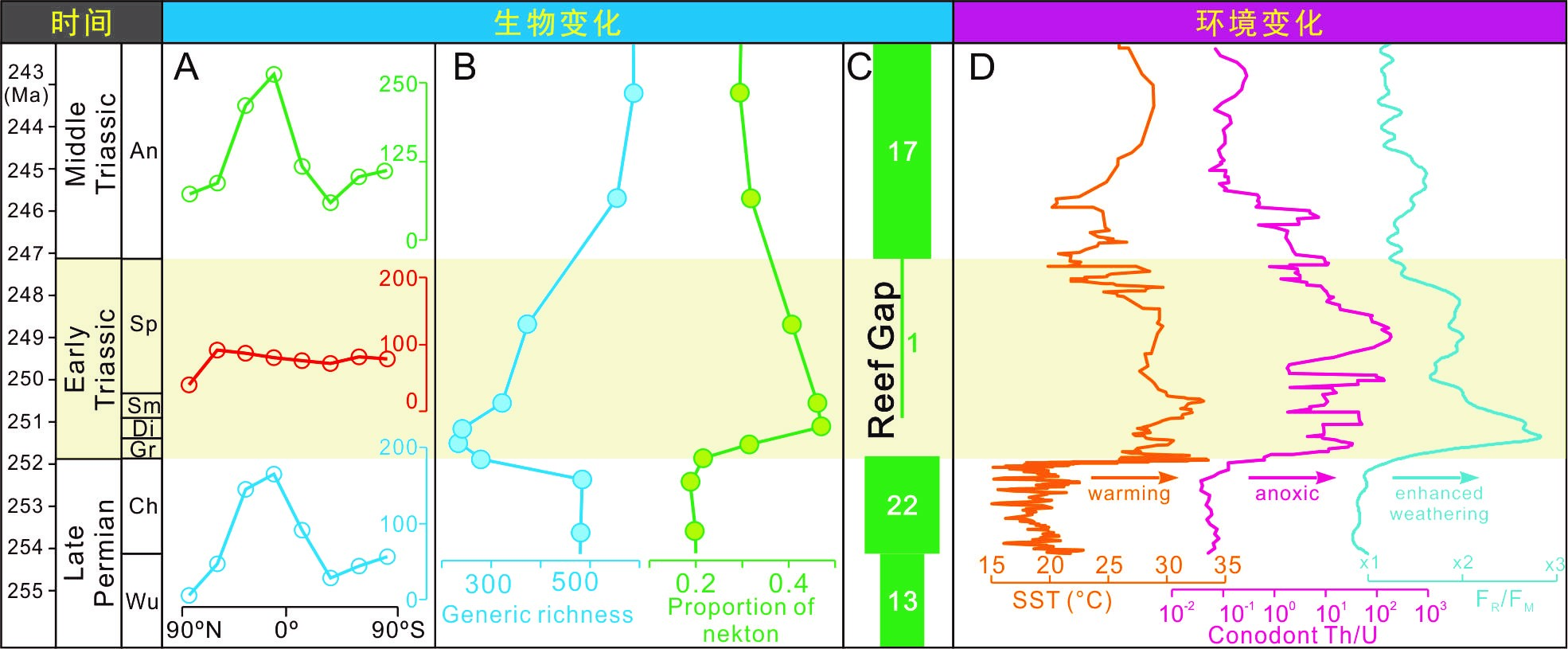
Biological and environmental changes from Late Permian to Middle Triassic
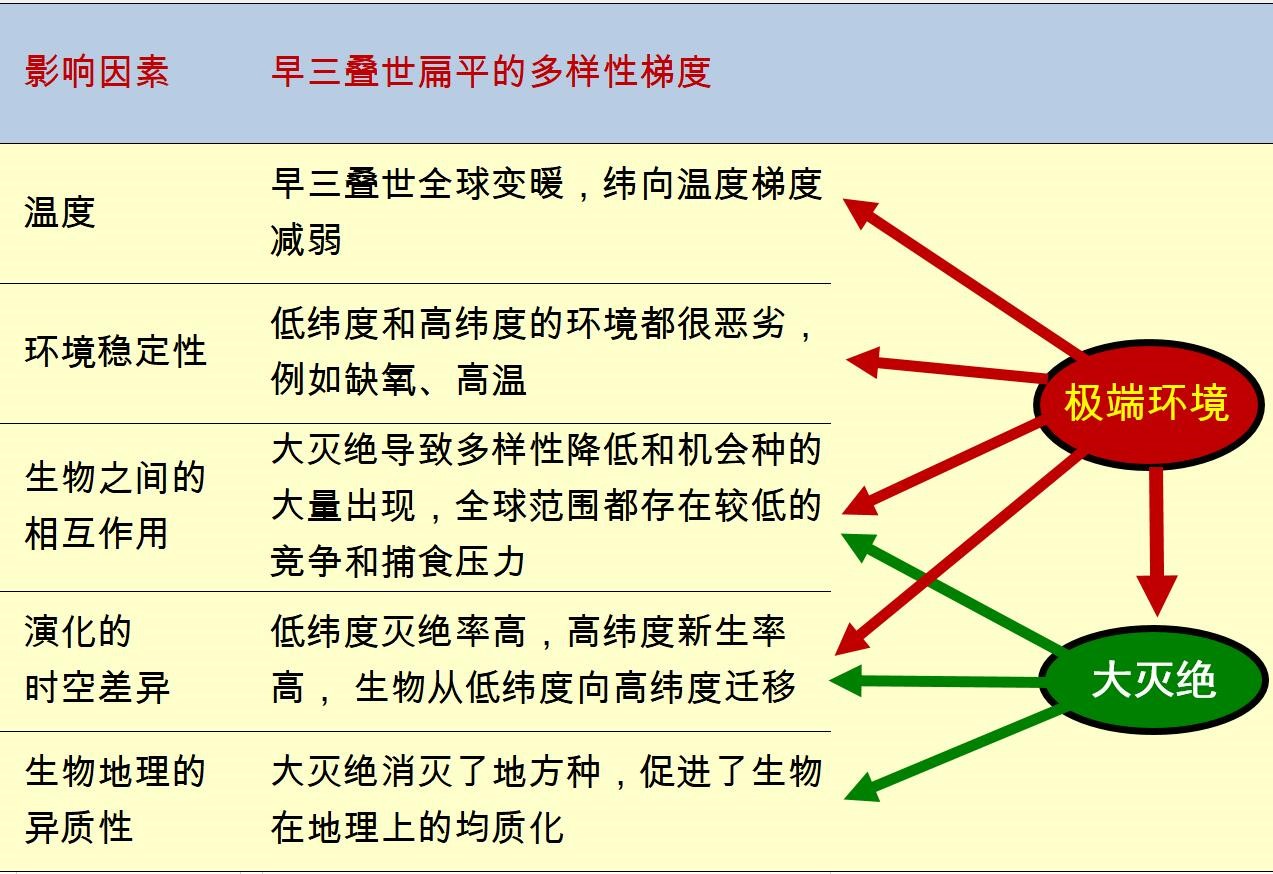
Formation of latitudinal gradient of flattened biodiversity in Early Triassic
Author: Song, H.*, Huang, S., Jia, E., Dai, X., Wignall, P.B., and Dunhill, A.M., 2020.
Title: Flat latitudinal diversity gradient caused by the Permian–Triassic mass extinction.
Link to the paper: www.pnas.org/cgi/doi/10.1073/pnas.1918953117.